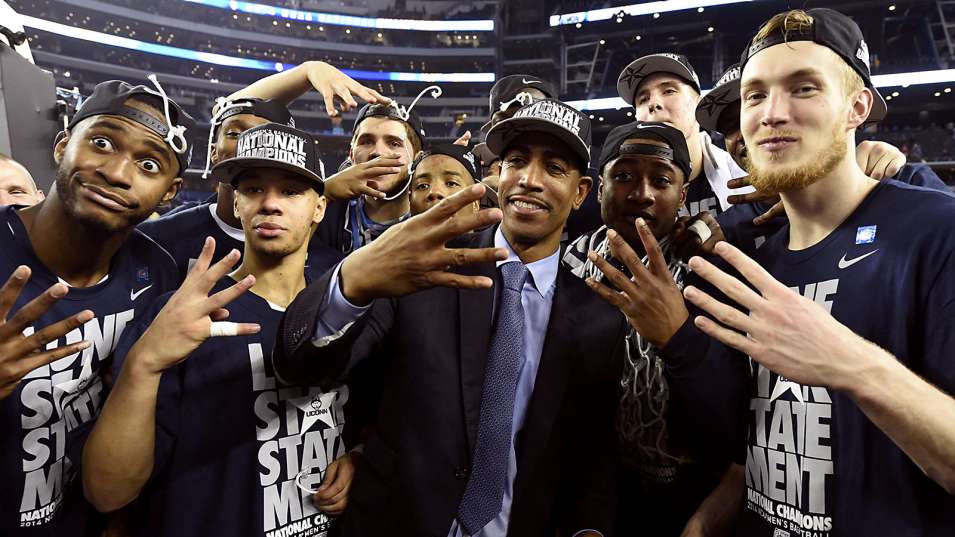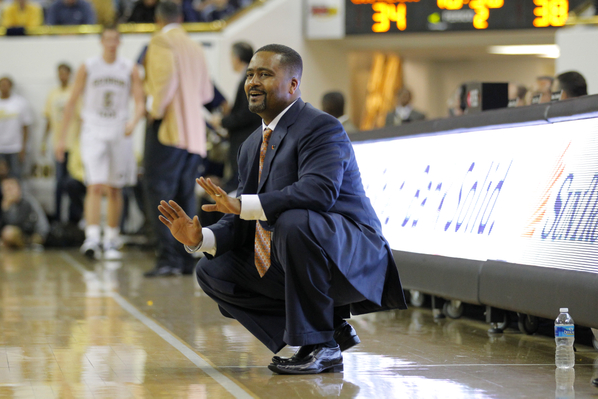Five Burning Questions in the AAC
Posted by Mike Lemaire on November 6th, 2014The best part about preview season and the lull before the college basketball storm is all of the questions. The meat of nearly every preview of any team or player or coach is the questions surrounding them. Can UConn repeat? How will the Huskies replace Shabazz Napier? Is this the year SMU gets back to the NCAA Tournament? Will Markus Kennedy be eligible? Although it would likely rank among the most boring reads of all-time, it wouldn’t be all that difficult to come up with questions about each player and coach on every team in the conference. For the sake of everyone’s sanity, we pared the list down to five burning questions. We did make an effort to ask some of the less obvious questions in an effort to avoid repeating ourselves too often.
What does the AAC have in store for an encore performance?
In the grand landscape of college basketball, the AAC sits in a rather precarious position. Yes, the conference can call itself the home of the defending national champions, but the conference is also very fortunate that the Huskies made that remarkable run last season. The glow from that championship hasn’t quite subsided and it’s helping distract from the fact that the conference could be in for a rough follow-up season. Arguably the most prestigious program from last season, Louisville, is gone.
The schools replacing the Cardinals – with the exception of Tulsa — are basketball also-rans that have almost never mattered on the national scene. UConn and SMU seem like NCAA Tournament locks at this point, but all of the other teams have major issues, and it’s conceivable that the conference could place only those two teams in the Big Dance. It’s also possible that five or six teams could make the NCAA Tournament. This season may very well be the best indication of what type of basketball conference the AAC will be going forward.
How exactly is Cincinnati going to score points and, more importantly, win games?
Rebounding, physicality, and tough defense have become the identity of the Cincinnati basketball program under head coach Mick Cronin. That identity has served coach and program well, especially last season when the Bearcats won 27 games and shared the regular season championship. Judging by the athleticism and size on the current roster, the Bearcats should be well-equipped to continue that pattern. They may not be as stingy as they were last year, but they will be a top-20 defensive team by March. Of course this isn’t news to any smart college basketball fan — no one needs to pay attention to Cincinnati’s defense, because it’s always there. People should instead wonder about Cincinnati’s offense, however, because it is rarely ever there. Even with one of the 10 best offensive players in the country last season, the Bearcats still finished 110th in offensive efficiency and bricked their way to a 47.7 effective field goal percentage. This season the Bearcats will have to find offense without the benefit of their three best scorers and their most talented freshman. The team’s defense will keep most of the games reasonably close, but its offense will need to come from somewhere if it wants to make the NCAA Tournament again.
Can UCF coach Donnie Jones save his job?
It seems odd to be talking about the job status of a mid-major coach who has won 20 games in three of his four seasons as head coach, yet here we are. Jones is entering his fifth season as the head coach at UCF and with the Golden Knights pegged by nearly everybody to finish at the bottom of the conference, there are legitimate rumblings about whether he will be back if the team stinks. Win totals are nice, but when your non-conference schedule is annually one of the worst in all of Division I basketball, they don’t mean much. Jones has never been to the NCAA Tournament; he has instead made national headlines by forcing the school to suspend him for three games because of recruiting violations; and now he is trying to build a winner that finished just 13-18 last season and lost three of its four leading scorers. It would be one thing if Jones and the Golden Knights looked to be trending in the right direction, but they actually appear to be heading the opposite way. The administration was eager to join a conference with a larger profile and now it may be equally eager to build a winning basketball program, which could spell doom for Jones.
Can Tulsa get enough out of its frontcourt to make a splash in its first season in the AAC?
One of the newcomers that the conference needs to be as good as advertised is Tulsa, and the Golden Hurricane actually have the potential to be better than advertised. Say what you want about new coach Frank Haith, but he is an excellent offensive basketball coach and if his team can improve its offense while maintaining its excellent defense, they may end up as one of the top three teams in the conference. Haith is fortunate to return basically everybody from a team that made the NCAA Tournament last season, including electric talents like James Woodard and Rashad Smith.
The problem is that very few of those returnees are going to be able to hold their own in the post against AAC opponents. The two primary starters up front last season were the 6’7″, 200-pound Smith and 6’9″, 245-pound fellow sophomore D’Andre Wright. Both are excellent players in their own right, but only Wright is a true post player and even he may be undersized against some of the better teams in the conference. Some of the team’s offensive and rebounding issues were a direct result of their lack of size and depth up front. Those problems may be exacerbated if players like Brandon Swannegan can’t step up and provide valuable minutes in the frontcourt.
How quickly will SMU coach Larry Brown settle on his rotation?
The Mustangs have a problem that most programs wish they had – he has way too many useful and talented players to fit into one rotation. The decision up front got a little bit easier when Texas Tech transfer Jordan Tolbert was ruled ineligible this season, but Brown has at least 10 players who deserve meaningful minutes and there is just no way that the venerable coach stretches his rotation that deep. This isn’t like Kentucky where John Calipari has the luxury of 10 players with legitimate NBA aspirations. Brown has clear-cut starters like Nic Moore and Markus Kennedy; he has productive and eligible transfers like Justin Martin and Ben Emelogu; and he has useful role players like Ben Moore, Sterling Brown, and Ryan Manuel. The hope is that Brown can manage roles and egos to avoid distractions and unhappiness. If he can, the Mustangs may become a well-oiled, 10-deep machine. If not, the Mustangs could end up missing the NCAA Tournament yet again.











































